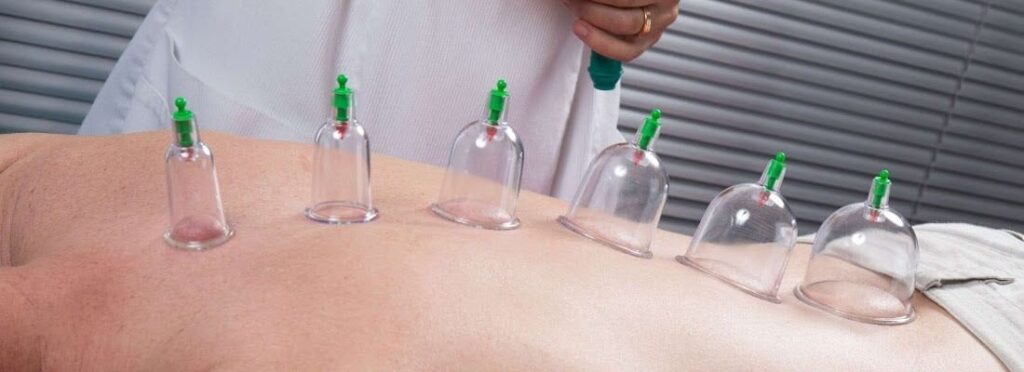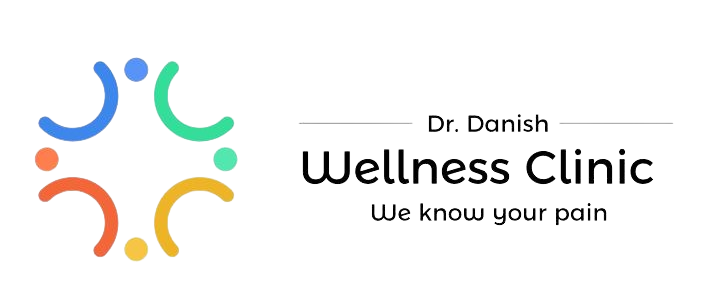CUPPING THERAPY

Cupping therapy is an ancient form alternative therapy that dates back to ancient Egyptian, Chinese and Middle Eastern cultures. Cupping therapy is one of the oldest and most effective method of releasing the toxins from body tissue and organs. It is also known as vacuum cupping, hijama cupping, horn treatment etc. It is a practice in which the therapist puts special cups on the skin to create suction.
There are many types of cupping, which can be classified by the type of cup used, the purpose for the cupping and the type of suction used. The most common are: Wet Cupping, which uses suction to draw blood out of the skin through small incisions; and Dry Cupping, which uses rubber or plastic suction cups applied to the skin to increase blood flow and circulation.
Dry Cupping is the type most commonly used by us.
What is Dry Cupping Therapy?
Dry cupping therapy (also known as ‘modern’ cupping therapy) is the variation of the treatment most commonly used. During a dry cupping treatment, cups are placed on the skin and heat or suction is used to create a vacuum inside them.
This puts the skin under negative pressure, lifting the top layer of the dermis up into the cup and separating it from the fascial tissues beneath. Unlike wet cupping therapy, dry cupping therapy does not involve any sort of bloodletting. Cups may be made of glass, silicone, bamboo, metal or ceramic and are typically left in place for 5-10 minutes during a treatment.


How to Apply Dry Cupping?
Dry Cupping done by applying plastic suction cups to skin that is either dry or to which lotion has been applied. The lotion allows the Physical Therapist to glide the suction cup over the affected area providing a form of deep tissue massage. The suction is achieved by putting a small, manually-operated suction pump on a valve which is attached to each suction cup. The Physical Therapist can control the amount of suction used. Multiple cups can be applied at one time to a painful or stiff area and are left on the skin anywhere from 5-10 minutes. Stretching exercises like active range of motion exercises can be utilized as well while the cups are applied.
When the cups are removed, the skin treated will have red circular areas that correspond to the diameter of the cup. This is the residual effect of the treatment – these red areas are temporary and will subside quickly over 2 or 3 days.
How does Dry Cupping work?
Initially the vacuum application of the cup pulls blood into an area. This leads to the effected tissue becoming saturated with fresh blood. This saturation can often leave a circular mark. However, this usually disappears after a day or so and happens to a lesser extent on subsequent treatments.
Neovascularisation (new blood vessel formation), occurs in response to blood being draw into the tissue. This leads to an increase in nutrient and oxygen content within the localised area.
Due to the vacuum effect, the soft tissue often experiences micro-trauma and separation between the tissue layers. The body responds to this micro-trauma by stimulating an inflammatory response, which is the natural process of healing. During this stage, the body releases chemicals such as white blood cells, platelets and fibroblasts to initiate healing.
Finally, the stretch that is produced in the soft tissue and fascia leads to a relaxation effect within the muscle, which results improved range of motion and performance.
What does dry cupping do to the body?
- Skin:Improved metabolism in skin tissue, better functioning of sebaceous and sweat glands, improved healing and improved skin resistance.
- Muscles:Stimulates blood flow and lymphatic drainage.
- Joints:Increased blood flow and secretion of synovial fluid.
- Digestive system:Increased peristalsis and secretion of digestive fluids, better digestion and excretion.
- Blood:Improved blood circulation, improved functioning of RBC and WBC.
- Nervous System:Stimulates sensory nerves of skin, Improves ANS.
Indications
Cupping therapy is indicated for both healthy patients (anti-aging treatment, rejuvenation purpose) and those suffering from ailments. Localized ailments that benefit from cupping therapy include a headache, lower back pain, neck pain, and knee pain. Systemic illnesses that have seen benefits with cupping therapy include hypertension, rheumatoid arthritis, diabetes mellitus, mental disorders, heart disease, hypertension, and infections. It can be used to treat skin diseases, respiratory, musculoskeletal, digestive, reproductive, and allergic conditions.

Contraindications
- Excessive dry or cracked skin
- Open wound or ulcer
- Fractured bone
- Dislocated joint
- Bleeding disorders
- Severe anaemia
- Muscle dystrophy
- Patients with a fear of blood or bleeding, empty stomach, below 7 years of age (for wet cupping)
- Below 2 years of age for dry cupping
- Abcess
- Excessive swelling
Benefits
- Cupping helps to reduce pain and inflammation.
- Improves blood flow.
- Used for relaxation, well-being, and deep tissue massage.
- It is safe, non-invasive and inexpensive
- Rejuvenationof body organs.
- Facilitates healing processand strengthens immune system.
- Used to treat:
- Blood disorders such as anemia and haemophilia
- Rheumatic diseases such as arthritis and fibromyalgia
- Gynecological disorders
- Skin problems: eczema and acne
- High blood pressure
- Migraines, Anxiety, and depression
- Varicose veins
Side Effects
After treatment, the skin around the rim of the cup may become irritated and marked in a circular pattern. There may be risk of Infection after undergoing cupping therapy and it can be avoided if practitioner follows the right methods for cleaning skin and controlling infection before and after the session.
After treatment, the skin around the rim of the cup may become irritated and marked in a circular pattern. There may be risk of Infection after undergoing cupping therapy and it can be avoided if the practitioner follows the right methods for cleaning the skin and controlling infection before and after the session.
- Burns from heated cups.
- Muscle tension or soreness.
- Skin infections, bruising, itching or scarring.

